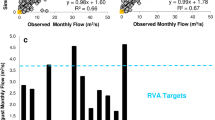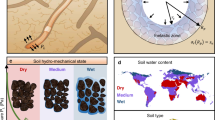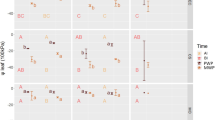Abstract
EVANS1 demonstrated that the energy with which the soil holds water could be correlated with the loss of weight of wireworms; the energy-level was suitably expressed by Schofield's2 pF scale. Evans and McL. Guild3 then demonstrated that the rate of production and size of cocoons of earthworms were determined not by the amount of water present in the soil but by the force with which the water was held. Despite these observations the pF scale as a measure of available water for biological processes has scarcely been used in ecological studies of animals that live in soil. Wallace's4 paper on the effect of hydrostatic pressure deficiency on motility of larvæ of Heterodera schachtii Schmidt is the only other similar study that I know.
This is a preview of subscription content, access via your institution
Access options
Subscribe to this journal
Receive 51 print issues and online access
$199.00 per year
only $3.90 per issue
Buy this article
- Purchase on SpringerLink
- Instant access to full article PDF
Prices may be subject to local taxes which are calculated during checkout
Similar content being viewed by others
References
Evans, A. C., Ann. App. Biol., 31, 235 (1944).
Schofield, R. K., Trans. Third Int. Congr. Soil Sci., 2, 37 (1935).
Evans, A. C., and McL. Guild, W. J., Ann. App. Biol., 35, 471 (1948).
Wallace, H. R., Ann. App. Biol., 43, 477 (1955).
Author information
Authors and Affiliations
Rights and permissions
About this article
Cite this article
MAELZER, D. Value of the pF Scale for Water in an Ecological Study of an Insect living in Soil. Nature 178, 874 (1956). https://doi.org/10.1038/178874a0
Issue date:
DOI: https://doi.org/10.1038/178874a0
This article is cited by
-
10.1007/BF00430054
CrossRef Listing of Deleted DOIs (2011)



